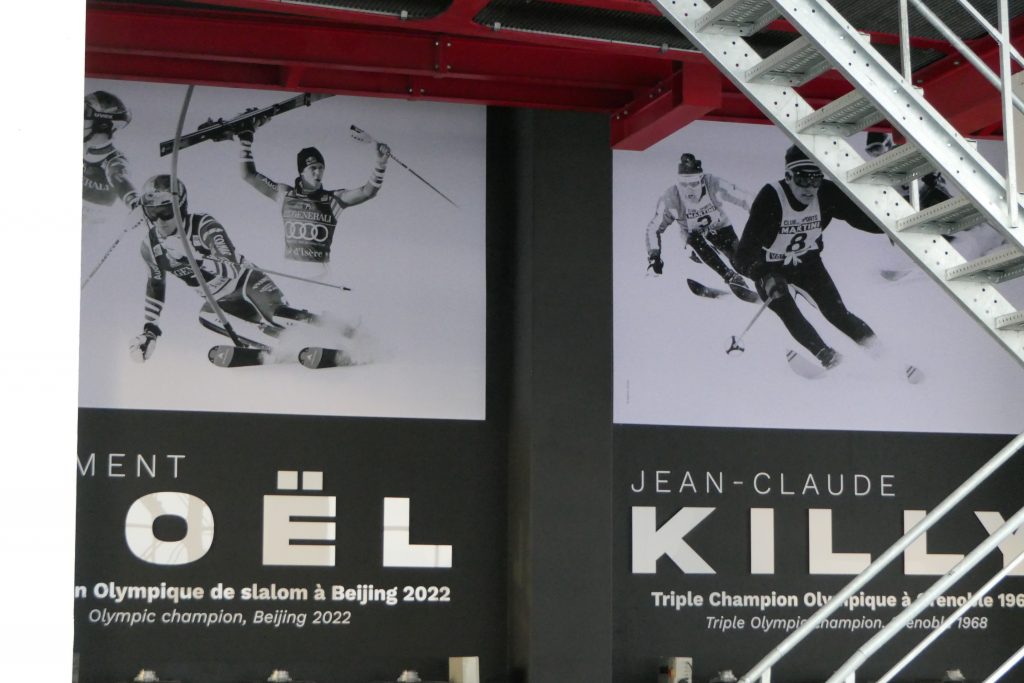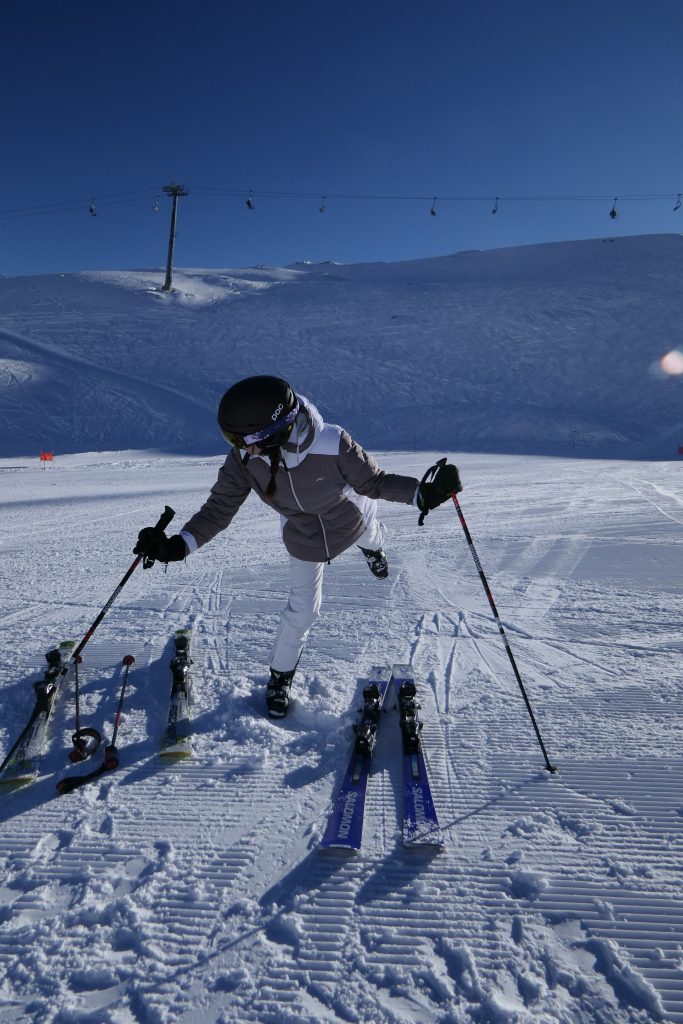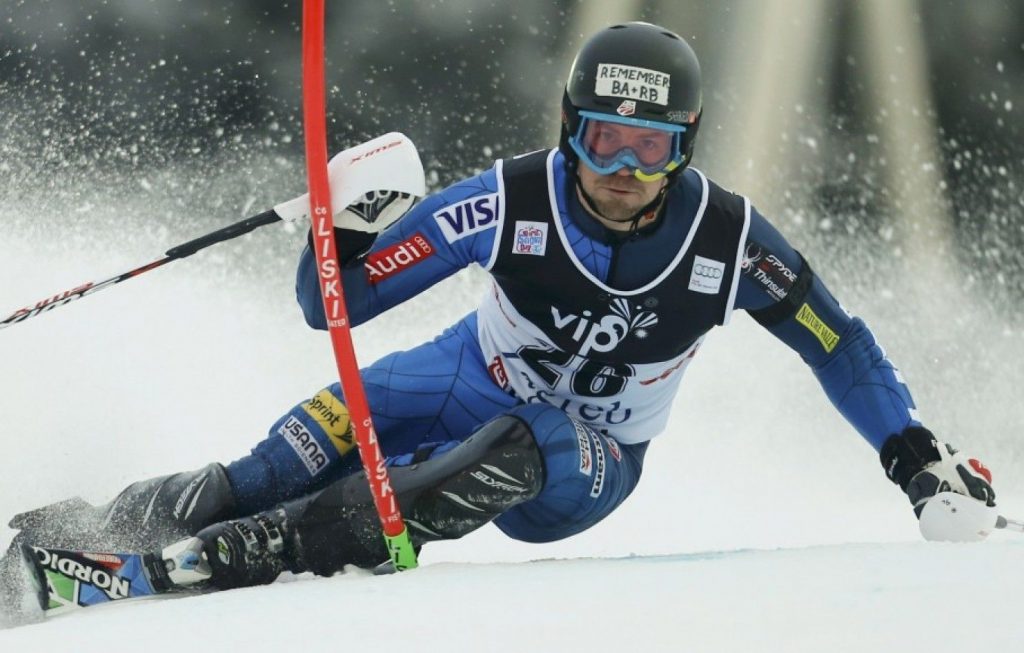Video clips:
- Nikita – Half and hour spent “one on one” coaching and fully recovered from yesterday’s setback – hip angulation working and on the way to later doing this run full parallel skiing top to bottom. Same solution as for The Legend yesterday – extending one leg and relaxing the other to move the centre of mass laterally.
- Erin looking good – dynamics strong and hip angulation working – arms need to be held a bit lower and wider.
- Chicken Wings – Good dynamics and angulation – just hold your arms more as if you were actually flying instead of having the elbows tucked into your sides. Look at the images of racers in the previous blog posts. (We’ll look at that in more detail tomorrow)
- The Legend – Specifically a non-cooperative adductor in the upper left leg! Otherwise – absolute legend!
Today’s new input was specifically to activate the feet and shin muscles to be more on the fronts of the skis – “feeling” the grip with the fronts of the skis and then for the first time developing hip angulation.
Correct hip angulation is complex and protective of the lower back – there are no successful shortcuts to getting this right but everyone succeeded in applying it after some indoors work.
Ankle Flex (Anterior Tibialis Contraction)
One way to increase pressure on the ski fronts is to flex the ankle inside the ski boot – not by squashing the ankle but by lifting the forefoot toward the shin and creating shin pressure on the cuffs of the ski boots. The boots then act as a lever transmitting force to the ski fronts. Gripping on ice requires pressure on the ski fronts and is strongly aided by the (upward) flexed ankle. Turning power comes mainly from the ski fronts – pressure on the tails of a ski makes it travel straight ahead.
Contracting the shin muscle protects the knee joints.
Keeping the ankle flexed (upwards) protects the knee and helps keep pressure on the front of the ski boot – even while extending the leg.
Extending the (flexed) uphill leg in a turn transition/initiation also serves to protect the knee joint from excessive strain through the quadriceps as the turn progresses.
Body Management (Hip Angulation, Anticipation, Control of Rotation, Linked Short Turns)
Take a look at the two Olympic champion skiers in the photograph below.
Killy’s image from the 1960s has his chest facing downhill whereas Noel’s image from 2022 has his chest facing forward. What Killy is doing destroys your lower back and is probably why he never went on skis again after he stopped racing.

Protecting the Spine
- Hold the front of the pelvis up – aiming for “neutral pelvis”
- During the turn pull the outer hip backwards so that the ski doesn’t pull it in front of your ribs
- Look for a stretch between the ribs and hip joint
- Look for a reflex contraction of the lower abdominals – the postural reflex
- Keep the shoulders/chest following the skis (to some degree)
- Always “counter turn” the pelvis more than the chest/shoulders (It’s only the pelvis that should “face downhill”)
- Pulling the hip backwards also prevents both hip rotation and full upper body rotation
Source of Hip Angulation
The upper body needs to tilt forward over one hip joint – then rotate around it. This is in addition to pulling back the outside hip etc.
The body shape produced alters the location of the centre of mass enabling pressure on the ski fronts and also greater agility both into and out of turns – and pole planting if the skis are swinging laterally.
The hip angulation also provides flexion of the hip joint that gives absorption of shocks. Increased angulation also increases the edge angle of the skis to the snow and may alter the turn radius and grip.
Angulation when upright and pivoting has another function – when ANTICIPATING the next turn it is used to get the Centre of Mass out of the existing turn (by tilting the torso forward at the hip ) and letting the Centre of Mass move over the skis to plant the ski pole downhill for a strong, clear and definite support.

When the entire body inclines into the turn with hip angulation present this below is what it looks like.


